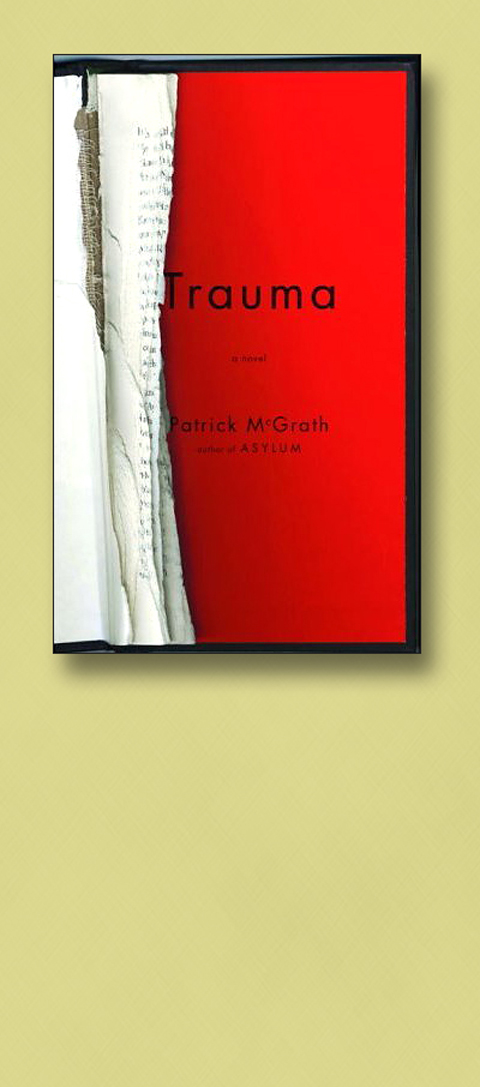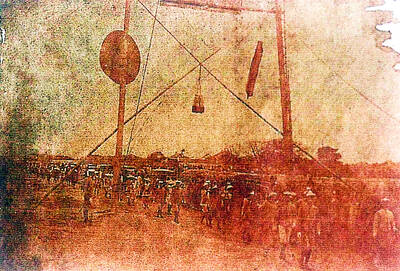A hero with a dysfunctional childhood and an even more dysfunctional family; grisly and graphic deaths; alarming dreams and premonitions; strange coincidences that may be the product of paranoia or hidden conspiracies; obsessive thoughts and outrageous psychotic behavior: These have been the staples of Patrick McGrath’s fiction.
In his earlier books these themes tended to come packaged with every familiar bell and whistle in the Gothic storyteller’s cabinet: haunted mansions and spooky asylums, dark and stormy nights, evil doppelgangers and madwomen, ancient curses and grotesquely deformed characters, dead animals and disease-carrying insects. Edgar Allan Poe was the presiding muse behind these creepy tales, with Brian de Palma’s horror movies providing some additional fuel.
Over the years, McGrath has pared away the more superfluous Gothic curlicues. In his predictable if ambitious new novel, Trauma, McGrath abandons the Gothic backdrops he has favored for New York City in the 1970s and traded the subliminal Freudianism of horror for something more subtle and direct.

At first glance his narrator, Charlie Weir, seems very much a modern, middle-class Manhattanite. He tells us that he grew up on West 87th Street, did his residency at Johns Hopkins in Baltimore and has since become a Park Avenue psychiatrist. He has treated Vietnam veterans suffering from post-traumatic stress disorder, and has collaborated on a book about trauma. He has an ex-wife named Agnes who has a PhD in sociology, and a bright young daughter named Cassie, whom he sees on weekends. At night he likes to listen to Rachmaninoff and Elgar and read Jane Austen.
From what Charlie tells us, however, he doesn’t seem like a terribly gifted psychiatrist. One of his patients — Agnes’ beloved brother Danny, an unstable Vietnam vet — blows his brains out, and another patient jumps out a window in an unsuccessful attempt to kill himself. When it comes to insights into his own psyche Charlie is even more obtuse. He says he became a shrink because of his unhappy childhood but doesn’t seem to grasp how deeply traumatic that childhood really was. We learn that his ne’er-do-well father abandoned the family when Charlie was 8, and that his mother sank into an angry, drink-fueled depression.
His manipulative mother also favored his brother Walt, who went on to become a famous and wealthy artist. And Charlie not only harbors seething rage toward Walt, but also has severe intimacy problems in dealing with women. He walked out on Agnes after Danny committed suicide, abandoning her at the very moment she needed him most. And his new relationship with a mysterious woman named Nora seems predicated on secrecy and a hidden rivalry with his brother; when Nora starts having traumatic nightmares and becomes emotionally needy, Charlie beats a rapid retreat. His efforts to get back together with Agnes are also unsuccessful, for she decides that he is “driven by loneliness and isolation, not by love.”
As Charlie spirals downward into a state of denial and inertia, embracing what Nora calls his “iceman nature,” the reader becomes increasingly aware of his resemblance to earlier McGrath heroes — unreliable narrators, ostensibly men of science, whose voice of calm and reason conceals all manner of fears, obsessions and possibly even madness.
How much of what Charlie tells us is true?
While McGrath uses his potent storytelling powers to draw us into Charlie’s fevered brain, we suspect early on exactly where this novel is headed. And while we may admire the author’s willingness to try something new, to trade the Gothic trappings of his earlier fiction for a more naturalistic setting, his rendering of Charlie’s day-to-day life remains curiously generic.

June 23 to June 29 After capturing the walled city of Hsinchu on June 22, 1895, the Japanese hoped to quickly push south and seize control of Taiwan’s entire west coast — but their advance was stalled for more than a month. Not only did local Hakka fighters continue to cause them headaches, resistance forces even attempted to retake the city three times. “We had planned to occupy Anping (Tainan) and Takao (Kaohsiung) as soon as possible, but ever since we took Hsinchu, nearby bandits proclaiming to be ‘righteous people’ (義民) have been destroying train tracks and electrical cables, and gathering in villages

Dr. Y. Tony Yang, Associate Dean of Health Policy and Population Science at George Washington University, argued last week in a piece for the Taipei Times about former president Ma Ying-jeou (馬英九) leading a student delegation to the People’s Republic of China (PRC) that, “The real question is not whether Ma’s visit helps or hurts Taiwan — it is why Taiwan lacks a sophisticated, multi-track approach to one of the most complex geopolitical relationships in the world” (“Ma’s Visit, DPP’s Blind Spot,” June 18, page 8). Yang contends that the Democratic Progressive Party (DPP) has a blind spot: “By treating any

Swooping low over the banks of a Nile River tributary, an aid flight run by retired American military officers released a stream of food-stuffed sacks over a town emptied by fighting in South Sudan, a country wracked by conflict. Last week’s air drop was the latest in a controversial development — private contracting firms led by former US intelligence officers and military veterans delivering aid to some of the world’s deadliest conflict zones, in operations organized with governments that are combatants in the conflicts. The moves are roiling the global aid community, which warns of a more militarized, politicized and profit-seeking trend

This year will go down in the history books. Taiwan faces enormous turmoil and uncertainty in the coming months. Which political parties are in a good position to handle big changes? All of the main parties are beset with challenges. Taking stock, this column examined the Taiwan People’s Party (TPP) (“Huang Kuo-chang’s choking the life out of the TPP,” May 28, page 12), the Democratic Progressive Party (DPP) (“Challenges amid choppy waters for the DPP,” June 14, page 12) and the Chinese Nationalist Party (KMT) (“KMT struggles to seize opportunities as ‘interesting times’ loom,” June 20, page 11). Times like these can